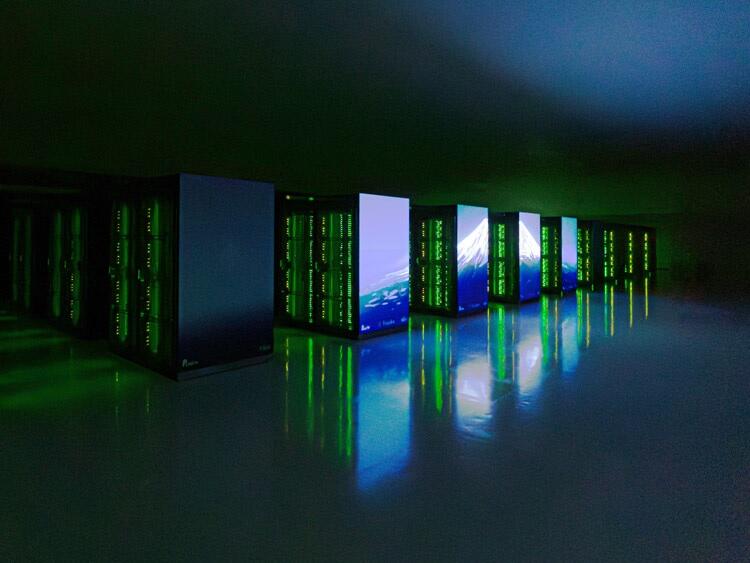
In this installment of [Exploring megascience], we present the pride of Japan, the RIKEN supercomputer 'Fugaku.' In the spring of 2020, 'Fugaku' unveiled its capabilities through infection simulations of COVID-19, which was spreading rapidly at the time. Over the past three years, it has achieved numerous milestones. We will take a closer look at the remarkable specifications of 'Fugaku,' which continues to maintain its world-class performance and the facilities that support it.
Useful for explaining Ohtani's breaking ball and predicting linear precipitation zones
Shohei Ohtani is a two-way superstar in U.S. Major League Baseball. 'Fugaku' has unveiled the secret behind his 'sweeper,' a big breaking curve ball that contributes to his success as a pitcher. An analysis conducted by a research team from the Tokyo Institute of Technology (Tokyo Tech) and other institutions has revealed that the ball does not easily drop due to the tilt of its rotation axis; instead, it moves with a large horizontal break.
Furthermore, in June, the Japan Meteorological Agency (JMA) began forecast experiments using simulations on 'Fugaku' to predict linear precipitation zones that could lead to torrential rainfall. These experiments continued until the end of October. The JMA has been providing information for forecasting the occurrence of linear precipitation zones since last year. However, the accuracy using the conventional supercomputer-based method is inadequate. The JMA aims to improve accuracy by utilizing 'Fugaku' for calculations based on high-resolution observation data.
'Fugaku' is located on a corner of Port Island, an artificial island located near the coast of Kobe City. After an approximately 15-minute ride on the Port Liner from Sannomiya, the center of Kobe, you can arrive at the Keisan Kagaku Center Station. A short walk from the station leads to the RIKEN Center for Computational Science (R-CCS), where 'Fugaku' is currently operational. It serves as the successor to the previous-generation supercomputer, the 'K computer.'
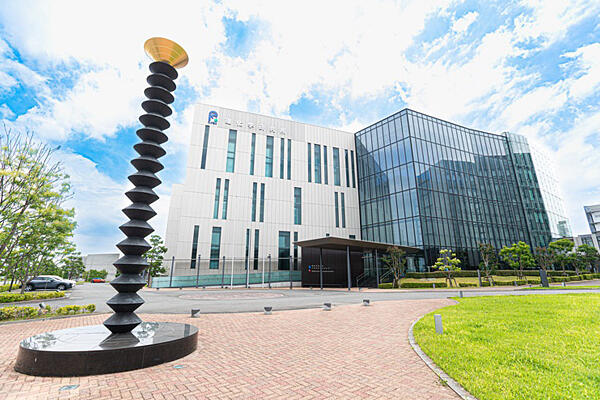
Simulation of droplet infection before completion
The simulation of a novel coronavirus infection (COVID-19) caused by droplets containing the virus was the factor that brought 'Fugaku' into the spotlight across Japan. These results were featured many times on television programs, which likely introduced the name 'Fugaku' to many people. This outcome resulted from research conducted by Team Leader Makoto Tsubokura of the Complex Phenomena Unified Simulation Research Team at the R-CCS (also Professor at the Kobe University Graduate School of Systems Informatics), and his team members.
In addition, they have conducted research on COVID-19 from various perspectives, including simulations to predict the economic impact of a COVID-19 pandemic, the search for therapeutic drug candidates, and the analysis of the mechanism by which the virus infects cells. These efforts have made significant contributions to both the scientific community and society. Director Satoshi Matsuoka of the R-CCS proudly stated, "We were able to prevent a significant drop in gross domestic product (GDP) while controlling the infection."
In fact, these studies were conducted during the test operation period before the completion of 'Fugaku.' As a successor to the 'K computer,' its manufacturing and installation have been underway since December 2019. The COVID-19 epidemic in early 2020 halted logistics and other operations. However, by February of that year, one-sixth of the total system was already in operation, and at that time, the performance of 'Fugaku' was already the best in Japan. It was at this stage that an urgent counter-COVID-19 program was launched.
Matsuoka explains that their ability to respond to the global crisis even before the completion of 'Fugaku' was due to their prior research and development efforts in various fields of science and applications that could be operated on 'Fugaku.' "In the case of previous supercomputers, many applications were only implemented after the machine's completion, and it took a year or two before full operation was possible. However, 'Fugaku' is the first Japanese supercomputer to have both the hardware and applications simultaneously prepared across a wide range of scientific fields."
Because some of the applications prepared in advance could be adapted for COVID-19 countermeasures, they were able to promptly initiate various research efforts. This approach garnered domestic and international attention, and the research on droplet infection was awarded the Gordon Bell Special Prize for COVID-19 Research in 2021, which recognizes outstanding research in the field of science and technology through the utilization of supercomputers.
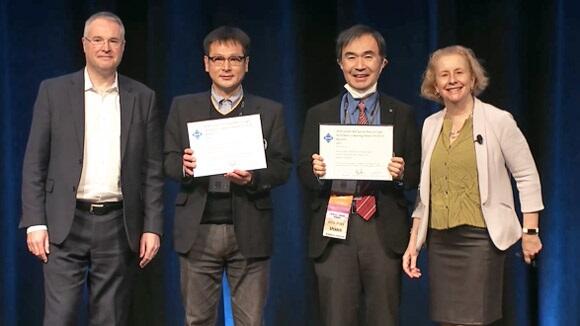
Capable of performing more than 500 quadrillion calculations per second while maintaining versatility
'Fugaku,' which started full-scale operation in March 2021, can perform more than 500 quadrillion calculations per second. This performance is equivalent to that of 20 million smartphones. It has the remarkable ability to complete calculations in a mere second, that would otherwise require over 100 years, even if every Japanese individual were to perform these calculations simultaneously without interruption. Furthermore, due to its emphasis on versatility simultaneously, it can run the same programs as smartphones. Such an achievement in both performance and versatility is a new feature of 'Fugaku.'
The term 'computer' might prompt many individuals to envision a device located on their desk or a laptop. However, 'Fugaku' occupies an entire building. The computer building where 'Fugaku' is installed has one basement floor and three aboveground floors, and the main system is located in the computer room on the third floor.
Upon entering the computer room, we observed neatly arranged square box-like structures that were approximately 85 cm in width, 140 cm in depth, and 220 cm in height within a spacious room occupying approximately half the size of a football field. These structures are the racks that serve as the main units of 'Fugaku.' A total of 432 racks are neatly arranged in 12 horizontal rows and 36 vertical rows within the computer room. The distance between each of the adjacent racks is approximately equal.
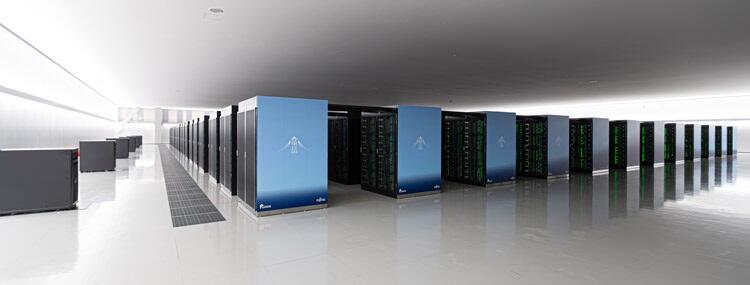
Each rack has 192 stacked nodes. As two central processing unit (CPU) chips are mounted on a unit, 384 CPU chips are installed on a single rack. Furthermore, 48 individual CPUs are integrated within each CPU chip. Although a single CPU can function effectively as a standalone computer, 'Fugaku' integrates many of them into a single chip and connects them via an ultra-high-speed network to operate the entire system as a unified supercomputer.
40 times faster with only twice as much power consumption
The performance rankings of the world's supercomputers are announced every six months. 'Fugaku' secured the top position in four ranking categories, including 'TOP500,' 'HPCG,' 'HPL-AI,' and 'Graph500,' during its trial operation phase from the first half of 2020 to the first half of 2021. In the first half of 2023, 'Fugaku' maintained its world-leading performance, ranking first in the 'HPCG' and 'Graph500,' second in the 'TOP500,' and third in the 'HPL-MxP,' formerly known as 'HPL-AI.'
Owing to its high performance, 'Fugaku' consumes 20 MWh, equivalent to approximately four years' worth of electricity consumed by a family of four. However, despite being up to 100 times faster than the 'K computer,' 'Fugaku' consumes only 20 to 30% more power than the 'K computer' in actual operation. 'Fugaku' is also the world's best in terms of energy-saving performance.
When 'Fugaku' proceeds with calculations at high speed, a large amount of heat is generated in each CPU. Although the computer room where the main unit of the computer is located is air-conditioned to maintain a room temperature of approximately 20 ℃, it is not sufficient to cool the CPUs. Therefore, a liquid-cooling system is adopted to cool the CPUs by installing a liquid-cooling piping system throughout the entire computer and allowing chilled water to flow at approximately 15 ℃ through the cooling heat sinks that are closely attached to each CPU.
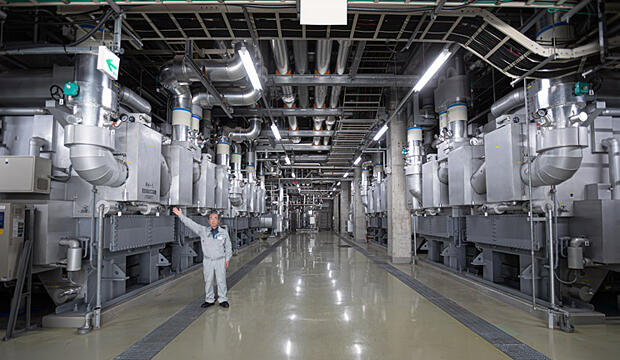
Air conditioning equipment, facilities responsible for preparing and distributing cooling water to cool CPUs, and transformers for voltage conversion are located on the lower floors of the computer building and in the adjacent heat source machinery building to support the stable operation of 'Fugaku.' There is a power generation facility in the heat-source machinery building that utilizes gas turbines to generate electricity. This electricity is used to supply a portion of the power required for 'Fugaku.' Senior Technical Staff Satoshi Matsushita of the Facility Operations and Development Unit at the R-CCS, who gave Science Portal a tour of the facility, explained, "Even in the event of a power outage due to a disaster, this facility will provide power to ensure that calculation results and other data in the file system on 'Fugaku' will not be lost."
Seismic isolation structure separating the building from the ground
Furthermore, the computer building is equipped with a seismic isolation structure similar to that of a high-rise building, which separates the building from the ground to ensure that heavy equipment, including the 700-ton 'Fugaku,' will remain undamaged in the event of a major earthquake, thereby protecting the 'Fugaku' from an earthquake on the level of the Hanshin-Awaji Earthquake.
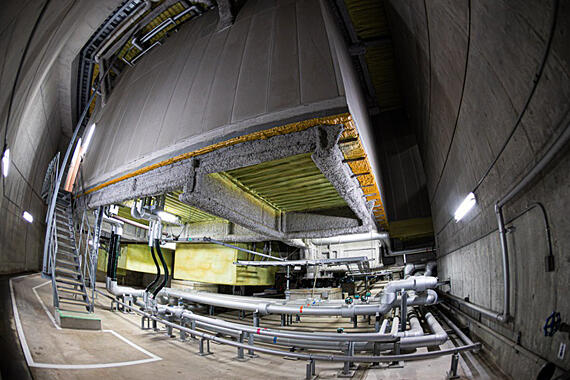
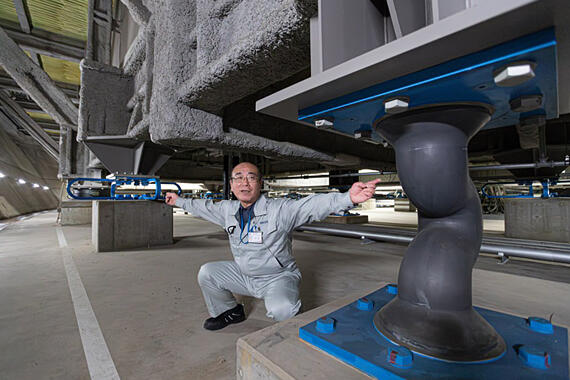
AI 'scientists' as partners to humans in the next generation
'Fugaku' is currently performing calculations and continues to generate new results. Numerous applications have also been made available, and a system has been established to enable easy access to the computing resources of 'Fugaku,' even for individuals who are not experts in supercomputing. Furthermore, efforts are in progress to develop the successor of 'Fugaku.' Matsuoka emphasized, "It is now crucial to extensively integrate advanced AI technologies that utilize supercomputers into the field of science to advance scientific research."
Large-scale supercomputers are simultaneously enabling the development of AI that mimics human intelligence such as the recently launched ChatGPT. Such advanced AI has the potential to make significant contributions to the advancement of science and technology, similar to traditional simulations. Research in this area is beginning to advance. For example, it may discover insights within large observational data that exceed human processing capabilities or replace computationally intensive simulations on supercomputers with AI-based approximations to accelerate computations.
Matsuoka believes that to advance science, it is essential to integrate AI into scientific research through the use of supercomputers closely linked to simulations. For the next-generation supercomputers after 'Fugaku,' AI 'scientists' capable of assisting in new discoveries as valuable partners for humans may be constructed.
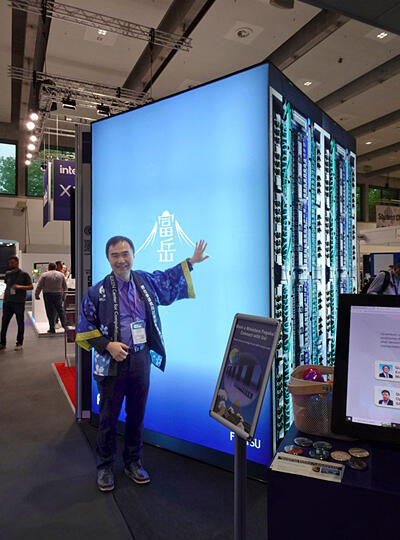
While it may sound similar to a concept from an anime or movie, there is a significant possibility that in 10 years, we will live in a world where AI technology is commonly used, and science and technology will be at the forefront of its use. We should monitor how supercomputers will evolve from 'Fugaku.'
Original article was provided by the Science Portal and has been translated by Science Japan.




